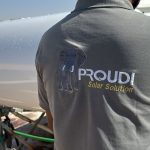Cementitious waterproofing is a specialized application method used to prevent water penetration and protect structures like bathrooms, swimming pools, water tanks, and other water-retaining structures from moisture damage. It involves the application of cement-based materials that effectively form a barrier against water ingress.
Key features of cementitious waterproofing include:
- Material Composition: Typically consists of a blend of cement, graded sand, and special additives that enhance waterproofing properties and adhesion to substrates.
- Application Method: Applied as a slurry or coating directly onto prepared concrete surfaces. It can be spray-applied, trowel-applied, or brush-applied depending on the specific requirements of the structure.
- Seamless Protection: Forms a continuous, seamless membrane when properly applied, which effectively blocks water and prevents leaks through cracks and gaps.
- Durability: Provides long-lasting protection when applied correctly, resisting the harsh effects of water, chemicals, and weathering.
- Versatility: Suitable for a variety of applications including bathrooms, swimming pools, water tanks, basements, and foundations where waterproofing is critical.
- Preparation Requirements: Surface preparation is crucial, involving cleaning, repairing cracks, and ensuring the substrate is sound and free of contaminants before application.
- Curing and Maintenance: Requires proper curing to achieve optimal performance. Regular maintenance and inspection are recommended to ensure continued effectiveness over time.
Cementitious waterproofing systems are favored for their affordability, ease of application, and ability to provide reliable waterproofing solutions for both new construction and renovation projects. Proper installation by trained professionals is essential to maximize the benefits and longevity of the waterproofing system.



